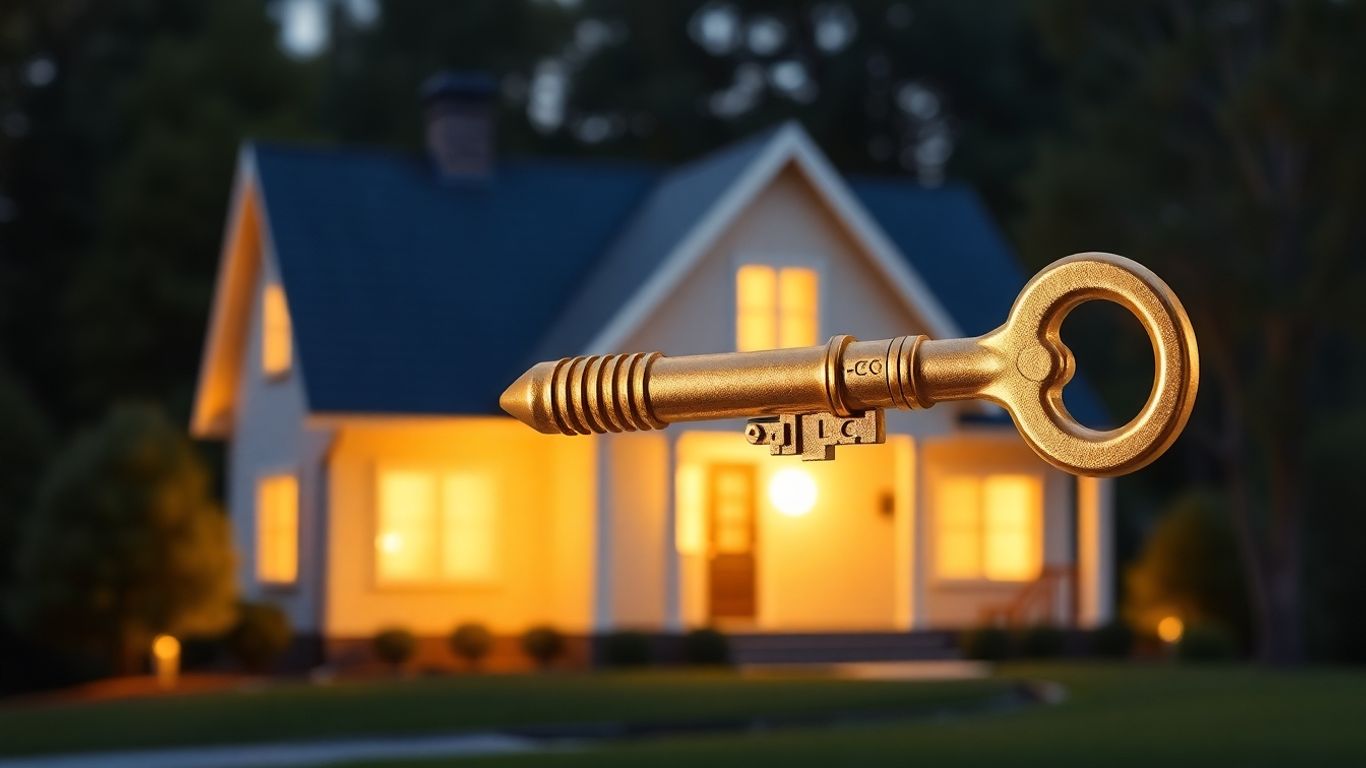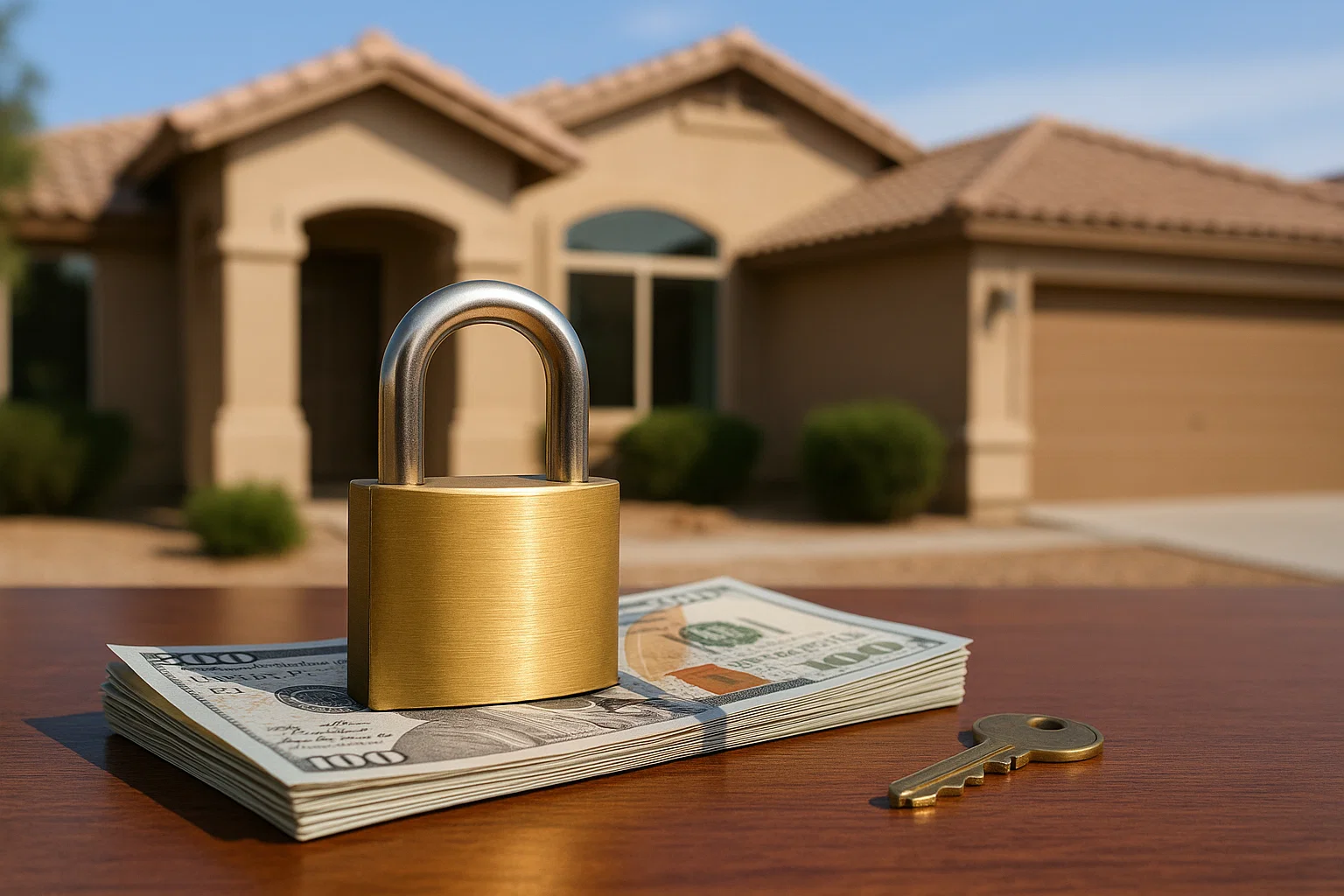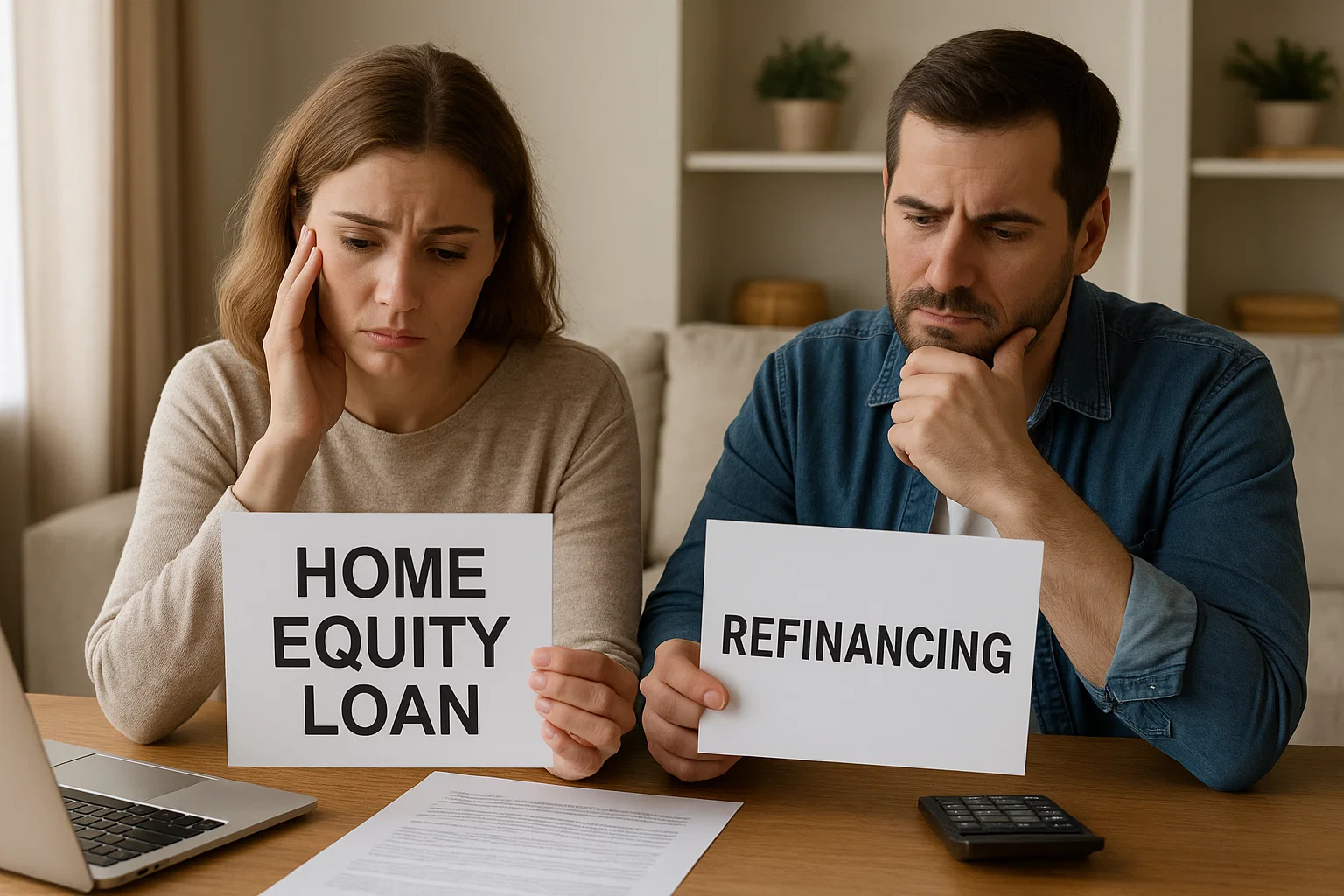Understanding Your Options: When to Refinance a Reverse Mortgage
November 19, 2025
Learn when to refinance a reverse mortgage to access equity, lower rates, or add a spouse. Explore your options and understand the process.

Thinking about changing your reverse mortgage? It's not as complicated as it sounds, and sometimes, it's a really good idea. Many people wonder if they can refinance a reverse mortgage, and the short answer is yes. You might want to do this for a bunch of reasons, like if interest rates have dropped or if your home is worth more now than when you first got the loan. This guide will help you figure out if refinancing your reverse mortgage makes sense for you.
Key Takeaways
- Refinancing a reverse mortgage can help you access more money, get better loan terms, or add a spouse to the loan.
- You have two main choices: refinance into another reverse mortgage or switch to a traditional mortgage.
- Generally, you need to wait at least 18 months after your current reverse mortgage closes before you can refinance.
- While you won't make a down payment to refinance, expect to pay closing costs, usually between 2-6% of the loan amount.
- Refinancing a reverse mortgage requires you to meet specific age, residency, and financial requirements, including having enough home equity and being current on property taxes and insurance.
Reasons To Refinance Your Reverse Mortgage
So, you've got a reverse mortgage, and you're wondering if refinancing it makes sense. It's not a simple yes or no answer, because, like anything financial, it really depends on your situation. But there are definitely some good reasons why you might want to look into it. Think of it like updating your phone plan – sometimes the old one just doesn't cut it anymore, and a new one could save you money or give you more features.
Securing Lower Interest Rates
This is a big one, and it's probably the most common reason people refinance any kind of loan. If the interest rates out there have dropped since you first got your reverse mortgage, refinancing could mean you pay less interest over the life of the loan. This helps you keep more of your home's equity. It's worth checking what the current rates are, because they can change quite a bit over time. Remember, the rate you got a few years ago might not be the best one available today.
Accessing Increased Home Equity
Your home might be worth more now than when you took out the original reverse mortgage. That's pretty common, especially with how home values have gone up in many areas. Since the amount you can borrow with a reverse mortgage is tied to your home's value and your age, an increase in your home's worth could mean you can borrow more money. Refinancing lets you tap into that extra equity you've built up.
Adding A Spouse To The Loan
This is a really important one if your relationship status has changed since you got the loan. Maybe you got the reverse mortgage before you were married, or your spouse was younger and didn't qualify at the time. Refinancing can allow you to add your spouse to the loan. This is key because it protects their right to stay in the home after you're gone, and they might even be able to access some of the loan funds too. It's about making sure both of you are covered.
Modifying Loan Terms
Sometimes, the way your loan is set up just doesn't fit your life anymore. Maybe you started with a variable interest rate and now you'd prefer the predictability of a fixed rate. Or perhaps you want to change how you receive your funds – maybe you want a lump sum instead of monthly payments, or vice versa. Refinancing gives you a chance to adjust these terms to better suit your current needs and preferences. It's about making the loan work for you, not the other way around.
Understanding Your Refinance Options
So, you're thinking about refinancing your reverse mortgage. That's a big step, and it's good you're looking into what that actually means. You've got a couple of main paths you can take, and each one changes things quite a bit. It really comes down to what you want to achieve with your money and your home.
Refinancing Into Another Reverse Mortgage
This is probably the most common route people take. Think of it like getting a brand new reverse mortgage that pays off your old one. Why would you do this? Well, maybe interest rates have dropped since you first got your loan, and you want to take advantage of that to save money over time. Or, perhaps your home has gone up in value, and you want to tap into that extra equity. It's also a good option if you got the loan before you were married and now want to add your spouse to the loan so they're protected. The big plus here is that you can keep getting payments or have access to a line of credit without having to worry about making monthly mortgage payments yourself. It's basically a way to update your existing loan with potentially better terms or more cash.
Converting To A Traditional Mortgage
This is a different ballgame entirely. You're switching from a reverse mortgage, where you don't make monthly payments, to a standard mortgage where you do. This might make sense if your financial situation has changed. Maybe you've received an inheritance, or your income has increased, and you feel comfortable making regular payments again. When you switch, you'll need to qualify based on your income and credit score, just like you did for a regular mortgage. Your new loan will need to cover the entire balance of your old reverse mortgage. The biggest change? You'll start making monthly principal and interest payments. But, the upside is that each payment you make helps you build equity back up in your home. This can be a good strategy if you're thinking about leaving your home to your heirs and want to leave them with more equity, or if you simply want to own your home outright again.
How A Reverse Mortgage Refinance Works
So, you're thinking about refinancing your reverse mortgage. It's a bit like getting your first one, honestly, just with a few twists. Basically, you're getting a whole new reverse mortgage that replaces your old one. It's not just a quick tweak; it's a full redo.
The Application Process
First off, you'll need to apply with a lender. They'll want to see all your current financial info, like bank statements and tax returns. They also need to make sure you're all caught up on property taxes and homeowner's insurance. It's a lot of paperwork, kind of like the first time around, but they need to check all the boxes.
Home Appraisal Requirements
Yep, they're going to appraise your home again. Someone will come out and figure out what your place is worth right now. This is pretty important because the value of your home is what determines how much money you can get. If your home has gone up in value since you first got the loan, you might be able to borrow more this time.
Meeting Financial Obligations
Lenders want to know you can still handle the upkeep of your home. This means proving you have the income to cover property taxes, insurance, and any necessary repairs. They'll look at your income sources and how you've managed your current reverse mortgage payments. It's all about showing you're financially stable enough to keep the house in good shape.
Closing The New Loan
This is the final step. When you close on the new loan, your old reverse mortgage gets paid off completely. Then, you start fresh with the new loan terms. It's the point where the old loan is gone, and the new one takes its place. You'll get your funds according to the new loan agreement.
Key Requirements For Refinancing
Thinking about refinancing your reverse mortgage? It's not quite as simple as just deciding you want a new loan. There are specific rules you need to follow to even be considered. These requirements are in place to make sure the refinance actually benefits you and that you still meet the program's guidelines. Let's break down what you'll need to have in order.
Age and Residency Criteria
First off, age is a big one. You, and any other borrowers on the loan, need to be at least 62 years old. This isn't just a suggestion; it's a hard rule for most reverse mortgages, including the HECM (Home Equity Conversion Mortgage). If you're looking to add a spouse to the loan who isn't 62 yet, you'll have to wait until they reach that age if they're going to be a co-borrower. Beyond age, your home has to be your main place of living. This means it's where you spend most of your time. Vacation homes or properties you rent out don't qualify for this type of refinance.
Home Equity and Property Standards
Your home's value plays a significant role. Generally, you'll need a good amount of equity in your home to refinance. While the exact percentage can shift based on your age and current interest rates, having at least 50% equity is a common benchmark. The older you are, sometimes the less equity you might need, as the loan amount is calculated differently. On top of equity, your home itself needs to be in decent shape. It must meet FHA property standards, meaning no major structural problems, working utilities, and a sound roof. Most standard single-family homes, and some condos or manufactured homes, can meet these requirements if they're well-maintained.
Federal Debt and Insurance Status
Lenders will check if you're behind on any federal debts. This includes things like federal student loans or taxes. If you have a payment plan set up and are making payments on time, you might still be okay, but being delinquent can be a roadblock. You also need to be current on your property taxes and maintain adequate homeowner's insurance. If you fall behind on either of these, it could disqualify you from refinancing. It's important to keep these obligations up to date.
Mandatory Counseling Sessions
Before you can finalize a reverse mortgage refinance, you'll likely need to complete another round of counseling. This is a requirement from the Department of Housing and Urban Development (HUD). The counseling session is designed to make sure you fully understand how refinancing works, what the new loan terms will be, and how it impacts your home equity. A HUD-approved counselor will go over all your options and answer any questions you might have. While there are some specific situations where you might be able to skip this, it's generally a required step to protect borrowers.
Navigating The Refinance Process

So, you're thinking about refinancing your reverse mortgage. It's a bit like getting a whole new loan, but it replaces your old one. The steps are pretty similar to when you first got your reverse mortgage, but there are a few specific things to keep in mind.
The Application Process
This is where you'll fill out all the paperwork. Your lender will need things like your current mortgage statement, tax returns, and proof of income. They'll also want to make sure you're all caught up on your property taxes and homeowner's insurance. It’s a new loan, so expect to provide all the same documentation you did the first time around. If you recently took cash out on your home, you might have to wait 12 months before you can replace that loan with a reverse mortgage.
Home Appraisal Requirements
Someone's going to come out and check out your home to figure out what it's worth right now. This is a big deal because your home's current value directly impacts how much money you can borrow with the new loan. If your place has gone up in value since your last loan, you might be able to get more cash out this time.
Meeting Financial Obligations
Lenders need to see that you can handle the ongoing costs of owning your home. This means showing you have the income to cover property taxes, insurance, and any necessary maintenance. They'll look at your income sources and how you've managed your current reverse mortgage payments.
Closing The New Loan
This is the final step. When you close on the new loan, your old reverse mortgage gets paid off, and you start fresh with the new terms. It’s important to understand all the costs involved, which can include appraisal fees, title insurance, and origination fees. While some costs might be lower than your original loan, especially mortgage insurance premiums due to credits from your previous loan, it's still a significant financial transaction.
It's really important to make sure the new loan actually benefits you more than it costs.
The
When Converting To A Traditional Mortgage

So, you've had a reverse mortgage for a while, and maybe things have changed. Perhaps your income has gone up, or you've come into some money, and you're now thinking about getting back into making monthly payments. Or maybe you're looking ahead and want to make sure there's more equity left in the house for your kids when you're gone. Whatever the reason, switching from a reverse mortgage to a traditional one is definitely an option to consider.
Qualifying Based On Income And Credit
This is probably the biggest shift. With a reverse mortgage, you weren't making monthly payments, so your income and credit score weren't the main focus for qualifying. But with a traditional mortgage? It's a whole different ballgame. Lenders will want to see that you can handle those regular payments. They'll look at your income sources, check your credit history, and figure out your debt-to-income ratio. It's pretty much the same process as when you first bought your home.
Paying Off The Existing Loan Balance
When you switch to a traditional mortgage, the new loan's job is to pay off whatever you still owe on your current reverse mortgage. This includes the principal amount you've borrowed, plus any interest and fees that have piled up. Your lender will help you figure out the exact amount needed to clear the slate on the old loan.
Beginning Monthly Payments
This is the part that really changes things day-to-day. Once the old loan is paid off and the new traditional mortgage is in place, you'll start making regular monthly payments. These payments will cover both the principal and the interest. The good news here is that each payment you make helps you build equity back up in your home. It's a way to start owning more of your house again over time.
Switching to a traditional mortgage means you'll resume monthly payments, but you'll also rebuild equity in your home over time. You'll pay closing costs and have a monthly payment, so make sure you're financially prepared.
Exploring Jumbo And Proprietary Options
So, you've got a home that's worth quite a bit, maybe even more than the standard FHA reverse mortgage limit. That's where jumbo and proprietary reverse mortgages come into play. Think of them as the upscale versions for homeowners with higher-valued properties. They can offer more flexibility and potentially let you tap into more of your home's equity than a typical HECM loan.
Higher Loan Limits For Valuable Homes
The Federal Housing Administration (FHA) sets a limit for their Home Equity Conversion Mortgage (HECM) program. As of 2025, this limit is $1,209,750. If your home's value is above this, a standard HECM might not let you borrow as much as you'd like. Jumbo reverse mortgages, on the other hand, are private loans that aren't bound by FHA limits. They can go much higher, sometimes up to $4 million or even more, depending on the lender and the specific product. This means if your home is worth, say, $1.5 million, a jumbo loan could allow you to access a larger portion of that equity compared to a HECM.
Benefits Of Jumbo Reverse Mortgages
Beyond just higher loan amounts, jumbo reverse mortgages can offer other advantages. Sometimes, they come with different interest rate structures or fees that might be more favorable for certain borrowers. They can also be a good option if you're looking to consolidate debts or need a larger sum for retirement expenses. It's not just about the maximum loan amount; it's about finding a product that fits your specific financial picture.
Eligibility For Proprietary Loans
Proprietary reverse mortgages are also private loans, but they're different from jumbo loans. These are often designed for homes that are valuable but might not quite meet the criteria for a jumbo loan, or they might have different features altogether. Eligibility for these loans depends on the lender, but generally, you'll still need to meet age requirements (usually 62 or older) and have a significant amount of equity in your home. The specifics can vary quite a bit, so it's worth talking to a specialist to see if you qualify and if one of these options makes sense for you.
Refinancing into a jumbo or proprietary reverse mortgage isn't just about getting more money. It's about finding the right tool for your specific situation, especially if your home's value exceeds standard limits. Always compare the terms, rates, and fees carefully to make sure the new loan truly benefits you.
Wrapping Things Up
So, thinking about refinancing your reverse mortgage? It's definitely an option, and for some folks, it makes a lot of sense. Maybe interest rates have dropped, or your home's value has gone up, giving you access to more cash. Or perhaps you want to add your spouse to the loan. You can either get a new reverse mortgage with better terms or switch to a traditional loan if your financial situation has changed. Just remember, there are costs involved, like closing costs, and you'll need to meet certain requirements. It's a good idea to really look at your own situation and what you want to achieve before you decide. Talking to a counselor and comparing your options is key to making sure you pick the path that's best for you.
Frequently Asked Questions
Can I refinance my reverse mortgage?
Yes, you can refinance a reverse mortgage. It's like getting a new loan to pay off your old one. This can be a good idea if interest rates have dropped, your home's value has gone up, or you want to add a spouse to the loan.
What are the main reasons to refinance a reverse mortgage?
People often refinance to get a lower interest rate, which means you keep more of your home's value over time. If your home is now worth more, you might be able to borrow more money. Also, you can refinance to add a spouse to the loan so they are protected and can stay in the home.
What's the difference between refinancing into another reverse mortgage versus a traditional one?
Refinancing into another reverse mortgage means you continue to receive payments without making monthly mortgage payments. Converting to a traditional mortgage means you'll start making monthly payments again, but you'll also build equity in your home over time and could leave more to your heirs.
How long do I have to wait to refinance my reverse mortgage?
Generally, you need to wait at least 18 months after you first got your reverse mortgage before you can refinance it. This waiting period helps make sure that refinancing will actually benefit you.
What are the costs involved in refinancing a reverse mortgage?
When you refinance, you'll have closing costs, similar to when you first got your loan. These costs can be about 2% to 6% of the loan amount. However, you won't need to make a down payment.
What if I want to add my spouse to the reverse mortgage?
If you got your reverse mortgage before you were married, or if your spouse is younger than 62, you can often refinance to add them to the loan. This ensures they have the right to stay in the home after you're gone and might allow them to access loan funds too.













Get in touch with a loan officer
Our dedicated loan officers are here to guide you through every step of the home buying process, ensuring you find the perfect mortgage solution tailored to your needs.
Options
Exercising Options
Selling
Quarterly estimates
Loans
New home

Stay always updated on insightful articles and guides.
Every Monday, you'll get an article or a guide that will help you be more present, focused and productive in your work and personal life.









.png)
.png)
.png)
.png)
.png)
.png)
.png)
.png)
.png)
.png)
.png)
.png)
.png)
.png)
.png)
.png)
.png)
.png)